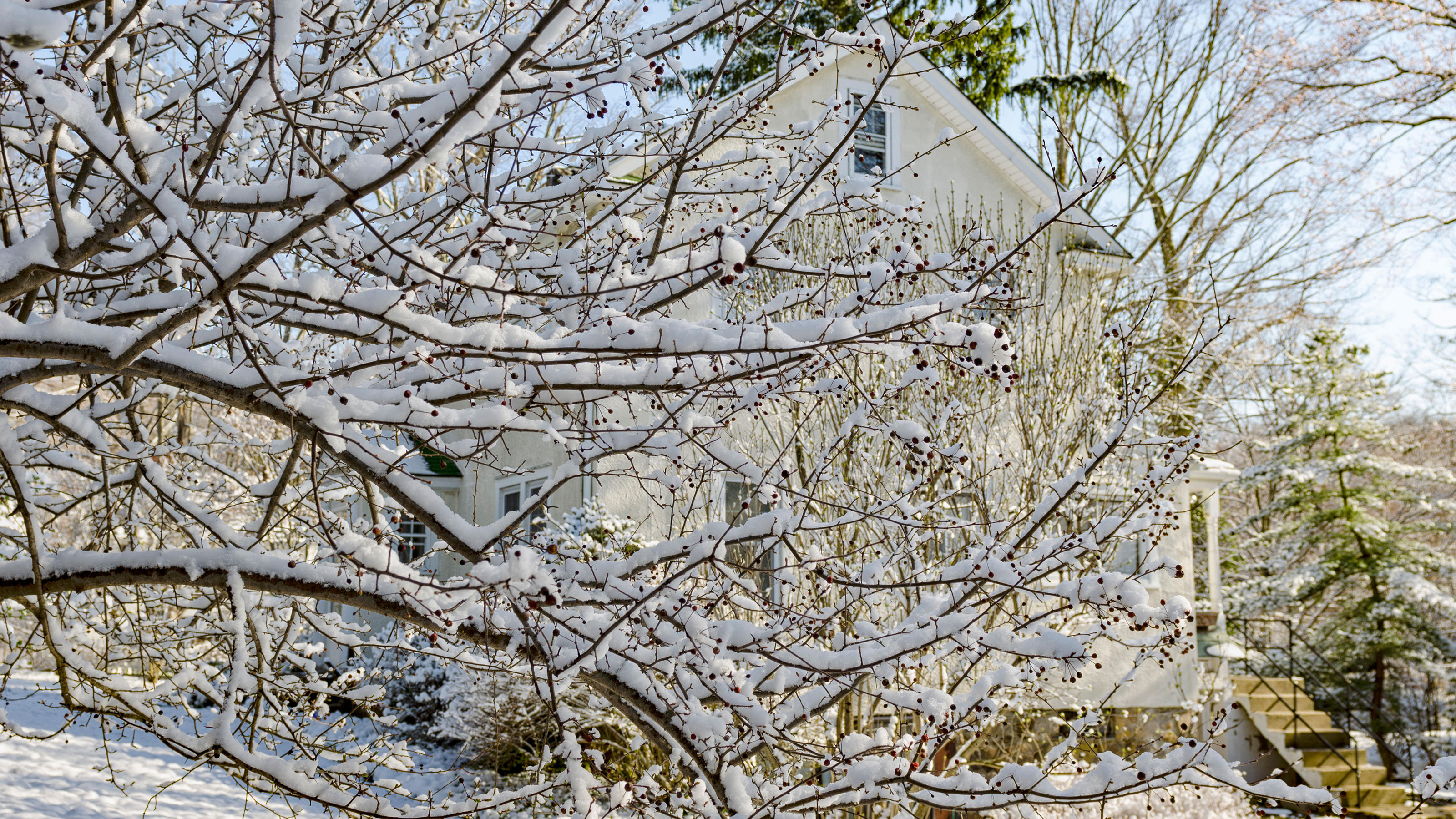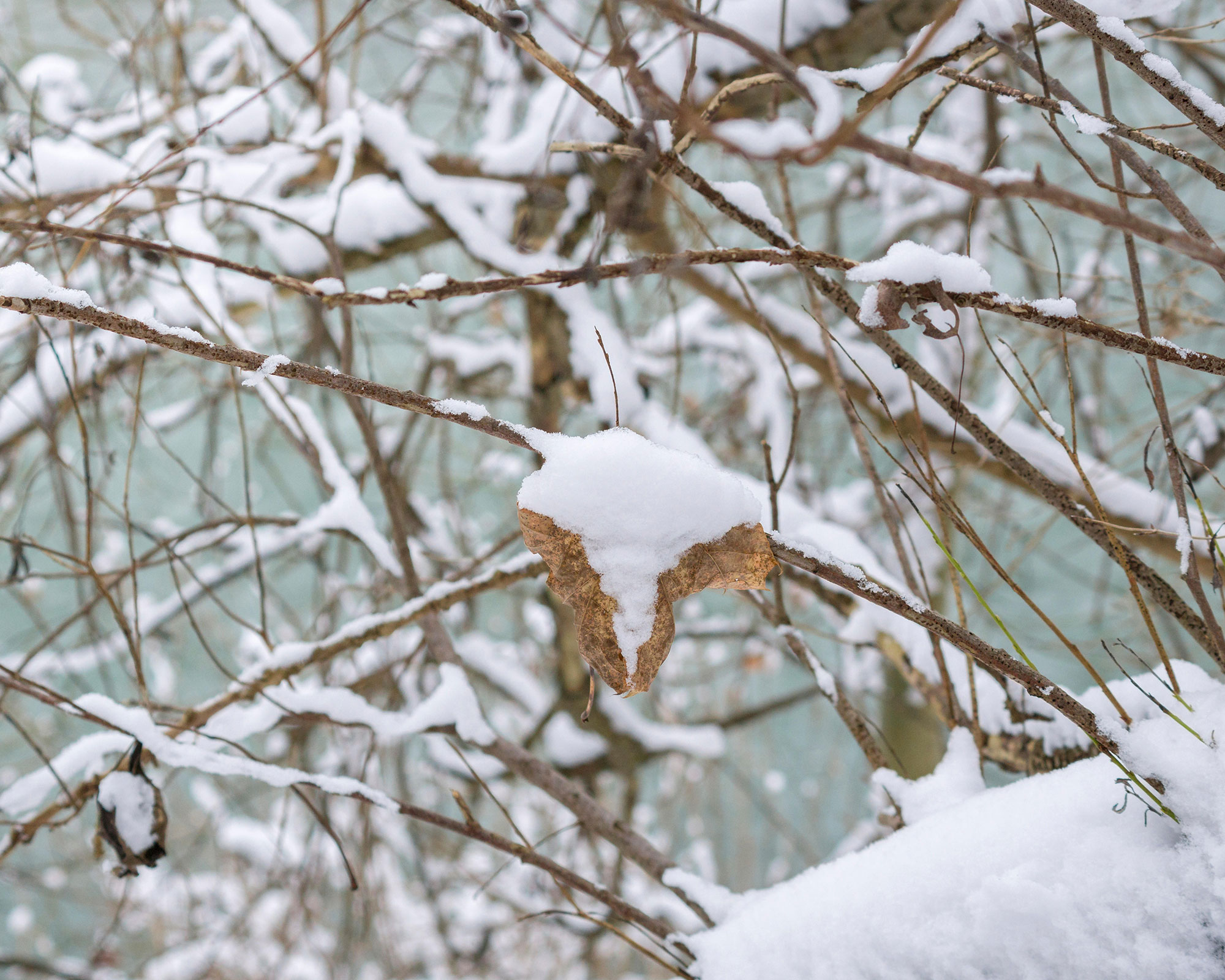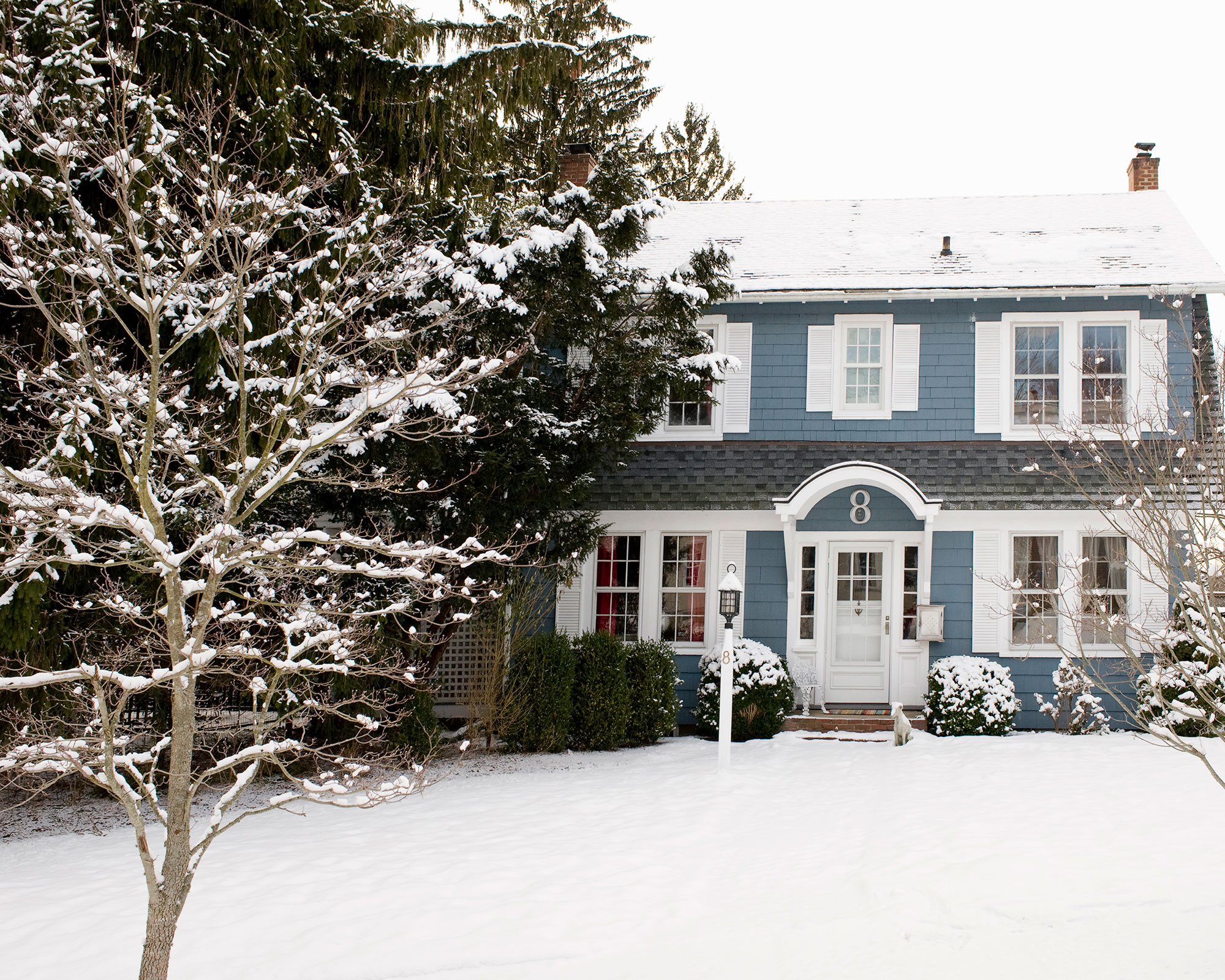Don't make this mistake if your trees and shrubs are covered in snow, says this garden expert
Heavy snow can be very damaging to plants, but experts reveal there are certain things you shouldn't do when trying to protect your prize specimens


It’s a pretty picture on a Christmas card but heavy snow accumulations on tree and shrub branches can cause severe damage and even lead to the death of treasured and established plants.
Protecting plants from snow is key, especially if a heavy fall is forecast. 'If you're in a climate with heavy ice or snow accumulation, it can be helpful to be keenly aware of the plants that have weaker structures and can break off under heavy snow or ice,' says Brendon Willis, founder and CEO at Willis Lawn Services in Oklahoma City, Oklahoma.

Why shaking snow-covered branches is a mistake
If your backyard trees and shrubs end up covered with snow, always use a soft broom to gently dislodge the build-up. 'Always do this rather than shaking the branches,' says Brian Jones, botanist and CEO/founder of home advice website Best in Edmonton. Vigorously shaking a tree or shrub to remove snow can potentially lead to even more extensive damage, further stressing branches and causing them to snap and break off.
'A broom will avoid damaging trees and shrubs that are covered with snow and ice. Starting near the top of the tree or shrub, gently lift branches upward with the broom and lightly knock snow off them,' says Brian.
Lindsey Hyland, founder of Urban Organic Yield has a great tip too: 'If you don’t have a broom to hand, when daytime temperatures warm up, you can try melting the snow off the plants with a hose or bucket of hot water.'

Safety in numbers in snowy conditions
It’s a good idea to give plants extra durability by tying together multiple branches with rope or twine. This will help to keep them from breaking under the weight of the snow.
'You should also support any large limbs with cable ties or other strong materials for additional support,' says Jamie Irwin, editor and landscape designer at Windproof Gazebos. 'Plus, you can create protective cocoons around vulnerable trees with twine and agro lath sheeting (criss-crossed sheeting in plastic or galvanised metal) to stop snow from settling on them.'

Prune and protect before snow arrives
If you want to protect plants from winter and snow, check when’s the best time to prune your shrubs and trees and plan ahead, says Jamie. 'It’s a good idea to prune back excessive foliage to ensure branches can hold less snow in winter.'
Always remove weak or diseased branches, as these will be most susceptible to damage should snow land on them.

Jayne Dowle is an award-winning gardening, homes and property writer who writes for publications including Sunday Times Home, Times Bricks & Mortar, Grand Designs, House Beautiful and The Spectator. She was awarded the Garden Journalist of the Year accolade at the Property Press Awards in 2021.
